My LASIK Experience & Beyond
(Previous: My Intraocular Lens Implant Surgery & Healing Experience )
After I had stabilized from my phakic intraocular lens implants and my LASIK surgery was scheduled for mid-March 2014, I was really looking forward to finally getting those glasses off my face! Then my surgery packet arrived in the 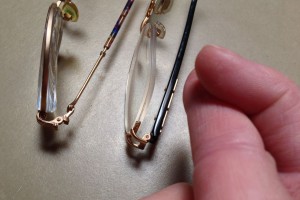 mail, with the long legal release form that lists all the possible but not very probable risks and complications, no guarantees of perfect vision, etc, etc, and I got nervous, remembering all the reasons I had been worried about LASIK for so many years, and that, unlike the IOL implants, this time there was no possibility of going back. I kept reassuring myself that so many of my friends had no problems with their LASIK surgeries, and my level of correction needed now was no worse than theirs, so my experience should be as easy as theirs. That didn’t help my worries like what if my eye jiggles accidentally when the laser is going, or what if I sneeze during surgery because of all the pollen that just started floating around in the air? Keep calm!
mail, with the long legal release form that lists all the possible but not very probable risks and complications, no guarantees of perfect vision, etc, etc, and I got nervous, remembering all the reasons I had been worried about LASIK for so many years, and that, unlike the IOL implants, this time there was no possibility of going back. I kept reassuring myself that so many of my friends had no problems with their LASIK surgeries, and my level of correction needed now was no worse than theirs, so my experience should be as easy as theirs. That didn’t help my worries like what if my eye jiggles accidentally when the laser is going, or what if I sneeze during surgery because of all the pollen that just started floating around in the air? Keep calm!
I had to take the post-surgery eyedrops so long after my lens implant surgery that I had to get refills of both the really expensive antibiotic drops and the anti-inflammatory drops, and when I asked if I could use up those drops for LASIK, Dr. Mandel said that was perfectly fine. Since the LASIK prep and post-surgery drops were only one week total, I had plenty and didn’t need to fill the new prescriptions in my LASIK packet…whew! I even had plenty of lid scrubs left from November too, so that worked out great. The LASIK prep was lid scrubs for a week prior to surgery, then only the antibiotic drops 3 days before surgery, then only 4 days total post-surgery for drops. No eye makeup for 3 days before surgery again, and since Dr. Mandel only schedules LASIK for later in the week, that meant I had to go to work without makeup. Sure wish I didn’t have such sparse and pale eyelashes!
My mom arrived Thursday afternoon so we had that evening while I could still see, then Friday morning we had a nice short drive since one of Dr. Mandel’s four offices is only a few miles from my house. I only waited probably 20 minutes in the waiting room, then about 10 minutes more sitting outside the surgery room after taking valium, numbing drops, putting on booties and cap, and face cleaning as surgery prep. They stick big suction cups on your eyes to stabilize and keep you from blinking, but that was just pressure, no pain. I saw four red lights around the edges, and the green light blinking in the center which is the one they told me to focus on. My LASIK was a physical blade to cut the flap, not a laser cut, but it was painless, just pressure and buzzing noise. I could feel and see when the flap was pulled back with the hinge on my nose side, since everything got really blurry, then I assume the brightest light was the laser itself, which made it harder to stay focused on the green light since it was paler, but I did it. It felt like a very tiny smooth spatula or a brush to smooth the flap back into place for no wrinkles to heal properly. Same procedure on my right eye, with the cornea flap hinge on my nose side, obviously easier to be accurate to peel back and smooth back into place without the nose in the way, and then they taped my patches on and led me to the recovery room. My surgery must have been fast, since the previous patient was still in the recovery room they wanted to put me in!
They taped across my field of vision when securing the patches on both eyes, so even when I was allowed to open my eyes to walk to the car, eat or use the restroom, I couldn’t really see, so I couldn’t tell how well the surgery worked. My mom thought they did that on purpose so I wouldn’t be tempted to peek…heh! It was a quick drive home, and I went straight to my bed for a while first since I was tired and wouldn’t be tempted to peek. After about an hour, probably when the numbing drops wore off, my eyes were really scratchy and sometimes even burning, with lots of tears too, but not so bad to take any pain medication. I wasn’t sleepy at all, and I had saved some shows I had already seen to show my mom, so I kept my eyes closed comfy on the couch while I listened to her watch the shows I had saved for her. My checkup call from Dr. Mandel’s office was around 4:30pm, and since my pain wasn’t bad enough for medication, it was no concern. I only peeked a little when I ate my leftover pizza for dinner, then once around 7:30pm I peeked at my iPhone to see an email & text a reply, but my mom yelled at me. 😉
My first checkup was 8:45am about 25 minutes away, but since I went to sleep early, I was up by 6am with patches off and starting both eyedrops 4 times a day. My right eye was fantastic, but my left eye was far enough behind that it was hard to focus together, especially at reading distance. I let my mom drive to the checkup and she was shocked how I could read the freeway signs so far away, better than she could! At my checkup I tested 20/20 in my right eye but about 20/40 in my left eye, and told to be patient since often the healing process can take a couple weeks, especially for the non-dominant eye. We ran some errands, had lunch, and watched my teenage cousin as the Lion in his school’s production of the Wizard of Oz (yep still halos in dark settings), but I needed a nap around 5pm since that was a busier day than we had intended!
Sunday my mom went home since I was doing fine, and since I wasn’t supposed to do any gardening for 2 weeks and the dust of cleaning my garage probably wasn’t any better for healing, I took a walk to the grocery store, caught up on  TV and went to bed early. My eyes trying to focus together made them much more tired than I was ever before, so that was frustrating, but at least being tired earlier hopefully meant more good rest to keep healing properly. My eyes were completely red on Saturday morning as I was told to expect, but most of that general red had cleared up by Sunday. I saw some redder spots of broken blood vessels, so I carefully lifted my eyelids wider and saw really scary-looking rings of broken blood vessels! From the placement this was from the suction cups during surgery, and I was glad my eyelids covered most of it…so don’t be scared if you see the same! This photo is from about a week after surgery, after the red ring wasn’t nearly as vivid anymore but still visible.
TV and went to bed early. My eyes trying to focus together made them much more tired than I was ever before, so that was frustrating, but at least being tired earlier hopefully meant more good rest to keep healing properly. My eyes were completely red on Saturday morning as I was told to expect, but most of that general red had cleared up by Sunday. I saw some redder spots of broken blood vessels, so I carefully lifted my eyelids wider and saw really scary-looking rings of broken blood vessels! From the placement this was from the suction cups during surgery, and I was glad my eyelids covered most of it…so don’t be scared if you see the same! This photo is from about a week after surgery, after the red ring wasn’t nearly as vivid anymore but still visible.
Week 1 Post LASIK:
Monday was my first day back at work with extensive computer reading but I worked really hard at taking breaks and very glad I have a window so I can focus far distances outside. Even with eye breaks I still got some eye strain headaches even with looking out the window. By about 4pm I thought my left eye might be a little better at iPhone and computer range, and I thought they were closer to the same driving home from work, but after dinner my right eye was a little blurrier than it was earlier for TV distance, so I went to bed early again. They said my eyes would keep changing, even fluctuating during the day, so I was going with the flow.
Mornings were the hardest to focus. My right eye worked pretty quickly but my left took a while to get going. My eyes got drier overnight than they used to so I used the artificial tears before I got out of bed. I would get headaches from computer reading so I at work I took breaks to look out the window and walk around. By around 2 to 3pm my left eye would be clearer at close range as well as able to read license plates across the parking lot out my office window, but my right eye tired and fuzzier. The first week an a half I closed my eyes for 30 minutes or so when I got home after work, which really helped. I kept reminding myself I was still healing, but it’s hard for me to be patient. 😉
 According to the instructions I had to wait 3 days before wearing any eyeliner or mascara. Eyeshadow was ok right away but I didn’t bother. I waited 4 days until all the prescription drops were done and this was day 5. My sensitive skin makeup wipes work well even getting the waterproof mascara off rubbing only the lashes without rubbing my eyes. It felt so much better to look in the mirror again!
According to the instructions I had to wait 3 days before wearing any eyeliner or mascara. Eyeshadow was ok right away but I didn’t bother. I waited 4 days until all the prescription drops were done and this was day 5. My sensitive skin makeup wipes work well even getting the waterproof mascara off rubbing only the lashes without rubbing my eyes. It felt so much better to look in the mirror again!
So many others had said how amazing it was to wake up and see after their LASIK, but I wasn’t feeling that yet. It was intellectually amazing that I wasn’t wearing anything on my face or on my eyeballs, but it was weird that it didn’t feel like a big change. I think that’s because the overnight patches I wore for 10 nights still felt like glasses, and I still had to be so careful about my eyes for 2 weeks not getting any water or shampoo in my eyes, no gardening, etc, that it emotionally seemed like my contacts were in. Now that I can wake up without patches on my face, it is very nice to see across the room! It is still weird though that since I can see, I assume my contacts must be in and need to take them out before sleeping. I guess that will take a while to break a 30+ year habit!
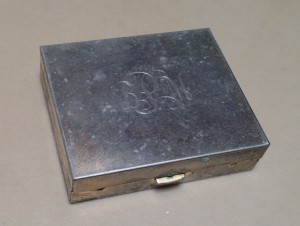 At my one week checkup I tested 20/20 right eye, 20/25 left eye, next checkup in one month. That night my first movie with my new eyes was The Lego Movie. I used my halo eyedrops before dinner and the screen was so crystal clear I wondered if it was 4k projection. Hooray for new eyes! The next morning I felt safe enough in my progress to clean out my medicine cabinet.
At my one week checkup I tested 20/20 right eye, 20/25 left eye, next checkup in one month. That night my first movie with my new eyes was The Lego Movie. I used my halo eyedrops before dinner and the screen was so crystal clear I wondered if it was 4k projection. Hooray for new eyes! The next morning I felt safe enough in my progress to clean out my medicine cabinet. 
My mom gave me this lovely brass monogrammed contact lens case when I first started wearing contacts. Even though the mirror fell out and the spring closure gave up long ago, it traveled the world with me as I used it daily for over 30 years. As a big part of my life but thankfully no longer needed since one of my longest-held wishes is finally at last coming true, now it can move to a keepsake box, along with my old pairs of glasses, from the super-thick, to the recently-thinner!
Week 2 Post LASIK:
Week two started with my first 5-mile hike, very carefully not getting any sweat in my eyes and no dirt near my face. Good to get some exercise! That week I was able to read computer text for longer stretches at work without getting a headache, but stayed off the computer at home and went to sleep earlier again. The difference in eyes was what was giving me focus headaches. Sleep makes a big difference, since finally getting at least 7 hours a night, reading is easier by mid-afternoon, but by evening I still needed some eye rest. I did try a short project knowing I would need breaks, but even only 30 minutes of machine sewing after all day of computer reading at work had me unable to focus at TV distance for an hour after the sewing was finished.
Week 3 Post LASIK:
That Saturday I must have pushed myself a bit too far driving in horrible weather for 3 hours up to Napa with friends, driving back using the halo drops, then staying up later than intended that night. I thought I got enough sleep but the next day my left eye was blurry almost more like slight double-vision while cleaning the garage, pruning and doing yardwork since I was finally allowed to play in the dirt again. I couldn’t focus clearly at any distance, near or far. I made sure to get decent sleep and was back to the recent normal the next day, with left eye behaving by mid-afternoon. I learned my lesson, but it isn’t easy for me to take it easy!
The rest of the week my left eye would work better by around 2pm, but by when I got home in the evening both my eyes were tired for computer work. I could still see my iPad ok in bed and it didn’t seem to bother my eyes to read to fall asleep. I was still trying to remember the artificial tears, but except for when I woke up in the morning when both were dry, only my left eye ever felt dry. I put tears in both every couple hours though since they said to do that for 6-8 weeks. It would be nice if my left eye would just get to the afternoon stage and stay there!
Week 4 Post LASIK:
I’ve been used to being able to do marathon crafting sessions requiring long stretches of intense focus, like sewing, cookie decorating or other crafts, but now I’m trying to adjust my habits, since I’ve already discovered that focusing intently for too long at close distance like sewing or other crafts leaves my eyes blurry for TV distance or farther away, and if I’ve gotten to that stage, it takes at least an hour of distance focus or a night of rest to recover. This past weekend I was very careful to take breaks more often, focusing at the TV about 17 feet away for my distance stretch, then back to my crafting. That worked well, and all weekend my eyes were fine. Another hike on Sunday I was still careful about sweat getting in my eyes, but my eyes were focusing together at their new best, which is the left eye slightly blurrier than my right eye. Monday felt like the first day where my left eye seemed better even in the morning, like the 20/25 I tested last checkup. Up until then it seemed like my left eye was a blurry 20/40 in the morning, then finally getting to 20/25 by afternoon. I’m supposed to keep using the artificial tears for 6 to 8 weeks after surgery, but since my eyes don’t feel dry except when I wake up in the morning, I have to remind myself to do it every couple hours, so I set them out on my desk at work so I see them all day. I have noticed that if I seem to have focusing issues, the artificial tears seem to help even though my eyes don’t actually feel dry.
 am definitely still having halos around points of light, but since the halo drops still work with no headache as long as I have enough light when I put them in, I’m ok with it. The ring is still where it has been since the lens implants, but I think the spokes of the wheels might be less. It’s harder to tell since it’s Daylight Savings Time so I’m not driving home from work in the dark anymore. There are still faint bloodshot marks where the suction cups were, so I am still thankful my eyelids cover the worst of those! From how they have been fading so far, I’m sure those will be gone in the next couple weeks.
am definitely still having halos around points of light, but since the halo drops still work with no headache as long as I have enough light when I put them in, I’m ok with it. The ring is still where it has been since the lens implants, but I think the spokes of the wheels might be less. It’s harder to tell since it’s Daylight Savings Time so I’m not driving home from work in the dark anymore. There are still faint bloodshot marks where the suction cups were, so I am still thankful my eyelids cover the worst of those! From how they have been fading so far, I’m sure those will be gone in the next couple weeks.
I plan to post periodic updates how my eyes progress over longer time periods, but since it feels like I have a pattern now, and my next checkup isn’t until the end of Week 5, I’ll go ahead and call my eye surgery journey a success…and a wish come true! 

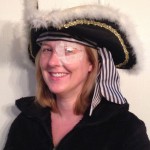
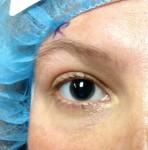
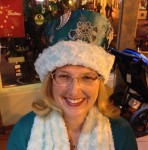

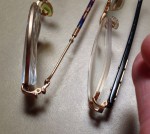

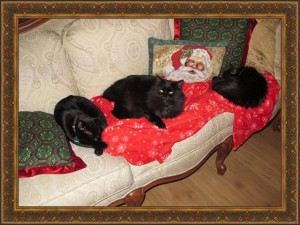

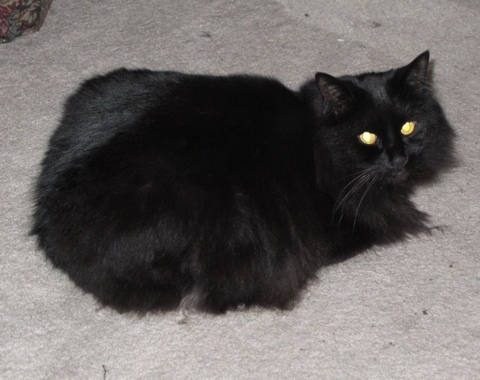

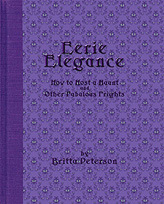
 on www.EerieElegance.com
on www.EerieElegance.com